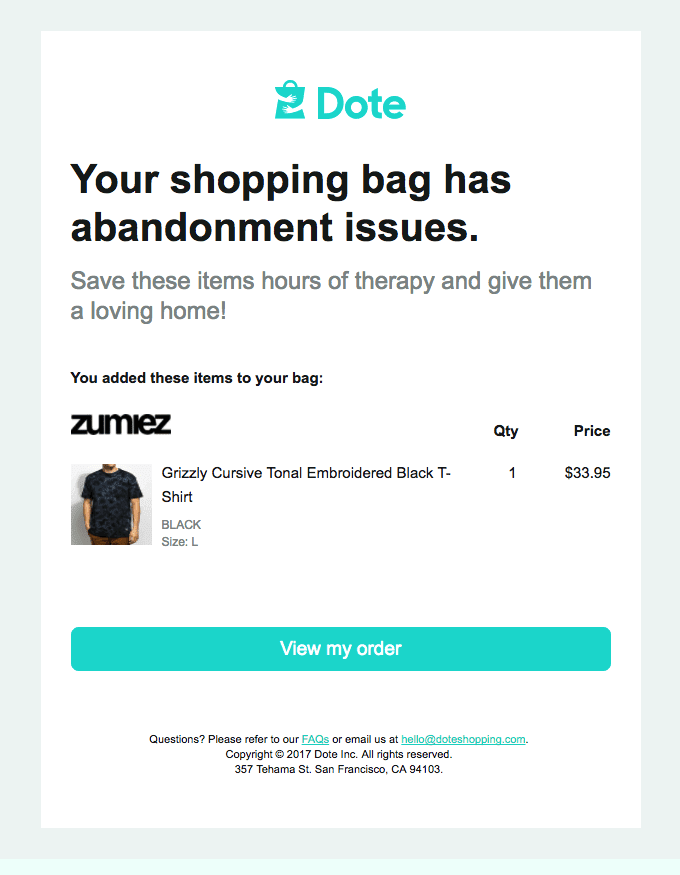Article first published in March 2017, updated June 2019
The best way to succeed in email marketing is to use all of the tools available to you. But the truth is that many businesses get comfortable with a certain email routine and stick with it. They overlook some of the best tools they have at their disposal because they aren’t sure how they work or if they’ll be beneficial to their campaigns.
One of those overlooked tools is email personalization.
What is email personalization?
So what exactly is email personalization and why does it matter?
Email personalization is the use of customer data to create targeted and relevant email campaigns. These campaigns are tailored to feel as if they’re specifically intended for that particular recipient.
Contrary to popular belief, personalization doesn’t just mean addressing the recipient on a first-name basis. It goes deeper than that. For you, as a marketer, to successfully send out a personalized email campaign means getting to know as much as you can about your customer. Every bit of information is important, be it their age, gender, and even email preferences.
You can then use this information to send content or promotions that your customer finds useful. Since your content is relevant to their needs, it becomes easier for them to buy into your brand and product.
Personalization is an underused tactic by marketers and those that are using it only scratch the surface by including the first name in the subject line or email. In a recent survey, improving email personalization ranked as the number one goal for 38% for marketers and was rated as the number one challenge by 36% of the survey participants.
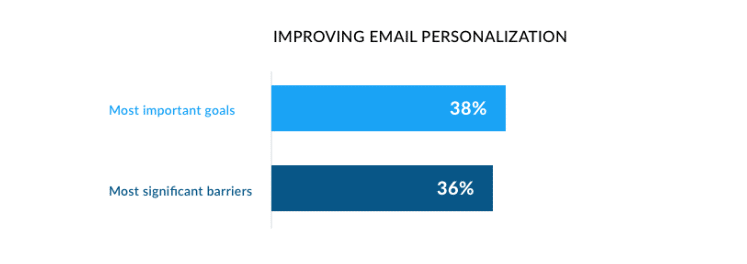
As a result, just 35% of subscribers say they open three marketing emails a week at most. Another 37% don’t open any at all, according to research from Magnetic and Retail TouchPoints.
Yet, when an email is personalized, transaction rates are six times higher than non-personalized emails, according to research from Experian. Even more, emails with personalized subject lines are 26% more likely to be opened and generate a 760% increase in email revenue from targeted and segmented campaigns.
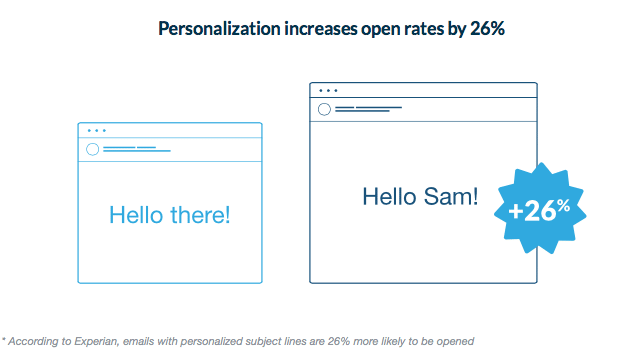
Marketers can take personalization way beyond the subject line. Publishers and media companies that utilize Campaign Monitor to reach their subscriber base have some excellent examples of advanced personalization techniques that you can use as inspiration.
5 personalization techniques to increase audience engagement
Here are 5 audience engagement techniques that Campaign Monitor customers have had success with that you can adopt and implement in your own email marketing campaigns.
1. Send segmented emails based on subscribers’ interests.
At the heart of personalization is segmentation. By segmenting your list, you can create tailored content for each group and realize some awesome revenue as a result.
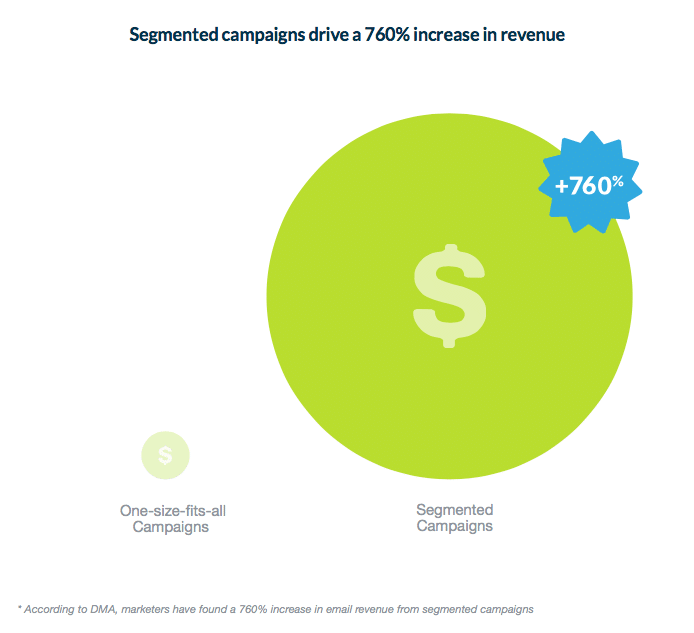
When subscribers receive emails they’re interested in, they’re more likely to engage with them.
How do you break your list of contacts into segments that make sense for your business? Follow the lead of Refinery 29.
Refinery29 accomplishes this goal through targeted signup forms. When someone signs up for a daily newsletter, Refinery29 asks them to choose their editions so that people in Los Angeles, for example, will receive relevant content pertaining to their local area.

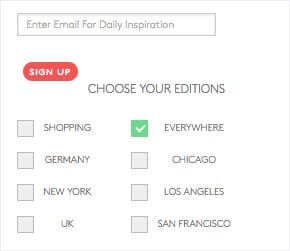
2. Dynamically change product images based on subscriber information.
Many people assume that personalizing an email is a time-consuming manual process, but that’s not the case with dynamic content. You can create one email, but the images and message inside the email will change based on the subscriber. It’s called dynamic content.
Seventy-five percent of marketers consider dynamic content a highly important marketing goal, according to MarketingProfs.
Consider this example. Let’s say your subscriber signed up to receive your weekly newsletter about pets. You could further target their interests by using preferences they’ve indicated, like kittens or puppies.
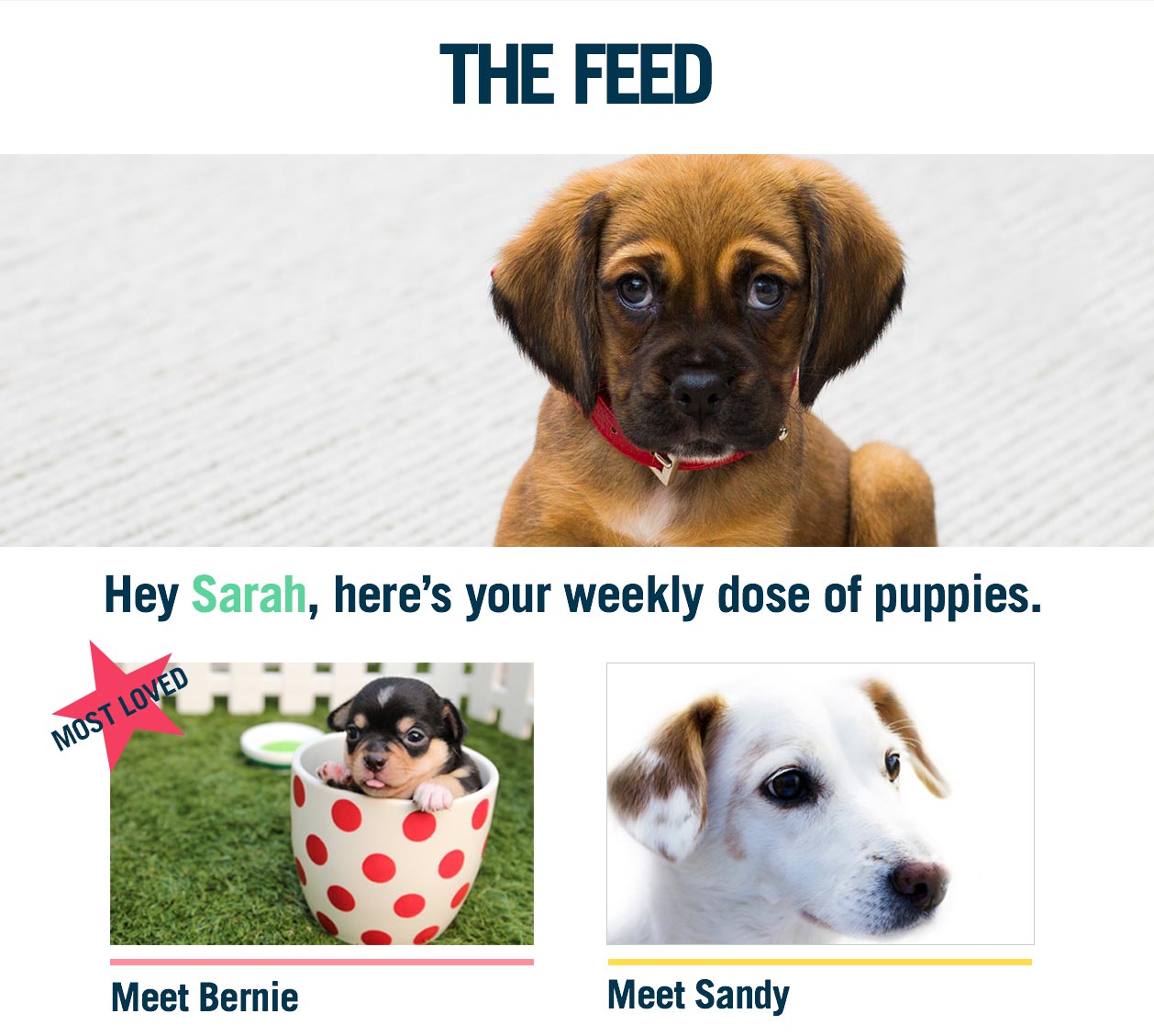
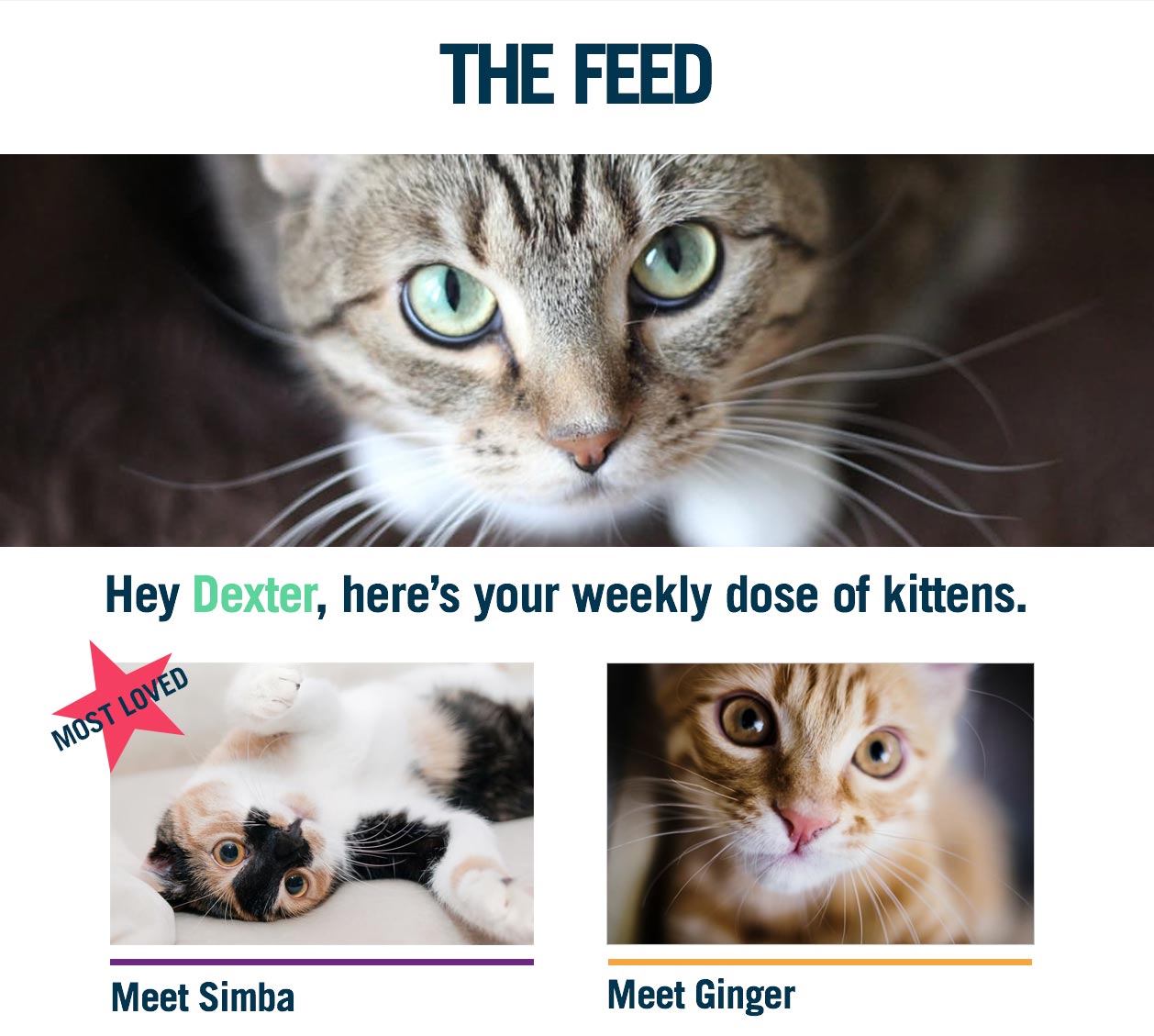
An email like this can be created using dynamic content. It’s a great way to provide personalized, real-time content without creating individual campaigns to send to each segment of your list.
3. Offer email classes that interest your subscribers.
Publishers have started a unique, personalized way to engage subscribers through email classes. Subscribers can sign up to receive a series of emails that teaches a specific lesson over a period of time. Using marketing automation makes this a snap.
For instance, Apartment Therapy created a series of classes that help subscribers bake. The Baking School gives subscribers one new lesson per email. Take a look at the example below:
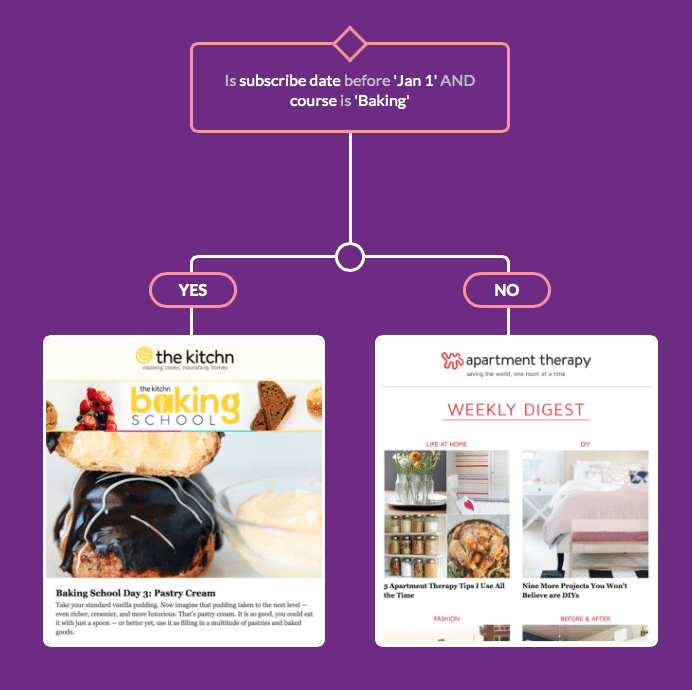
The email explains what the day’s lesson is and provides subscribers a link to get more details.
Since subscribers specifically opt in to this baking class, the publisher can expect higher engagement rates.
4. Send emails based on subscriber behavior.
Another great way of engaging your audience is by sending emails based on their behavior.
Did they visit a certain web page a number of times? Send content based on their visit to the web page. Or, if they clicked on a link in an email, you can boost engagement by sending content based on that activity.
Source: Really Good Emails
A great example of a behavioral email marketing campaign is when a customer wanted to buy something that wasn’t in stock. Once the item is back in stock, you can send an email alerting them that you now have it—bonus points for adding a discount coupon to thank them for their patience.
What makes this one of the best personalization techniques? Each email that you send out is originally initiated by your customer. The result is that your emails are timely, relevant, and effective. With this strategy, your overall engagement will also increase.
5. Develop a buyer persona.
One of the best ways to discover what your customers really want is to walk in their shoes. That’s exactly the opportunity buyer personas present.
A buyer persona is simply a profile of your customer. You can model a persona based on demographics, gender, income, and any other attributes that make for your ideal customer. You can then use this model to segment your customers who fit or closely resemble this profile.
Creating a buyer persona enables you to come up with a personalized experience for your customers. They’ll probably think you took a trip inside their head, as this strategy allows you to “predict” what your customers need at exactly the right time. And that, after all, is the whole essence of email personalization.
How to collect more data for stronger personalization
Of course, to send personalized emails, you have to collect information from your subscribers. If you’re concerned about asking personal questions, don’t worry. Fifty-seven percent of consumers are willing to share personal information, as long as it’s beneficial to them and is used responsibly, according to Experian.
Here’s a look at three ways to collect customer data:
1. Collect information on your signup forms.
When subscribers initially join your list, you can ask for additional information beyond their name and email address. Consider adding another field that asks for the subscriber’s birthday, location, job title, or interests.
Of course, you don’t want to make the form too long. Asking for one or two pieces of additional personal information is fine, but asking for more than that could cause the subscriber to abandon the form.
2. Use integrations to collect more customer data.
Don’t have enough time or resources to collect data? Thirty-six percent of businesses say they don’t have enough staff to focus on data collection and implementation, according to a report from Experian.
If you’re a Campaign Monitor customer, you’re in luck. We have heaps of helpful integrations in our App Store to help you compile customer information with specific collections designed with publishers in mind and a whole section focused on personalization.
3. Use a subscriber preference center.
Let subscribers tell you exactly what kind of emails they want from you with a subscriber preference center.
We mentioned this idea earlier. Campaign Monitor customers can easily set up a page that allows subscribers to select their personal interests. Here’s how.
By giving subscribers the power to make these choices, they’re more likely to open your emails because they know they’ll receive messages tailored to their preferences.
Wrap up
If you’re looking to improve your metrics, you should consider personalizing more of your email campaigns this year.
Follow the lead of digital media companies and publishers and personalize your emails for a big impact. Try using one of the techniques above and see what kind of results you get. As you get comfortable, work on other personalization techniques. Before you know it, personalizing emails will be as routine as creating a subject line.
If you need more information on how you can run highly targeted and personalized campaigns, check out our ultimate guide on email personalization techniques.
SaveSave

